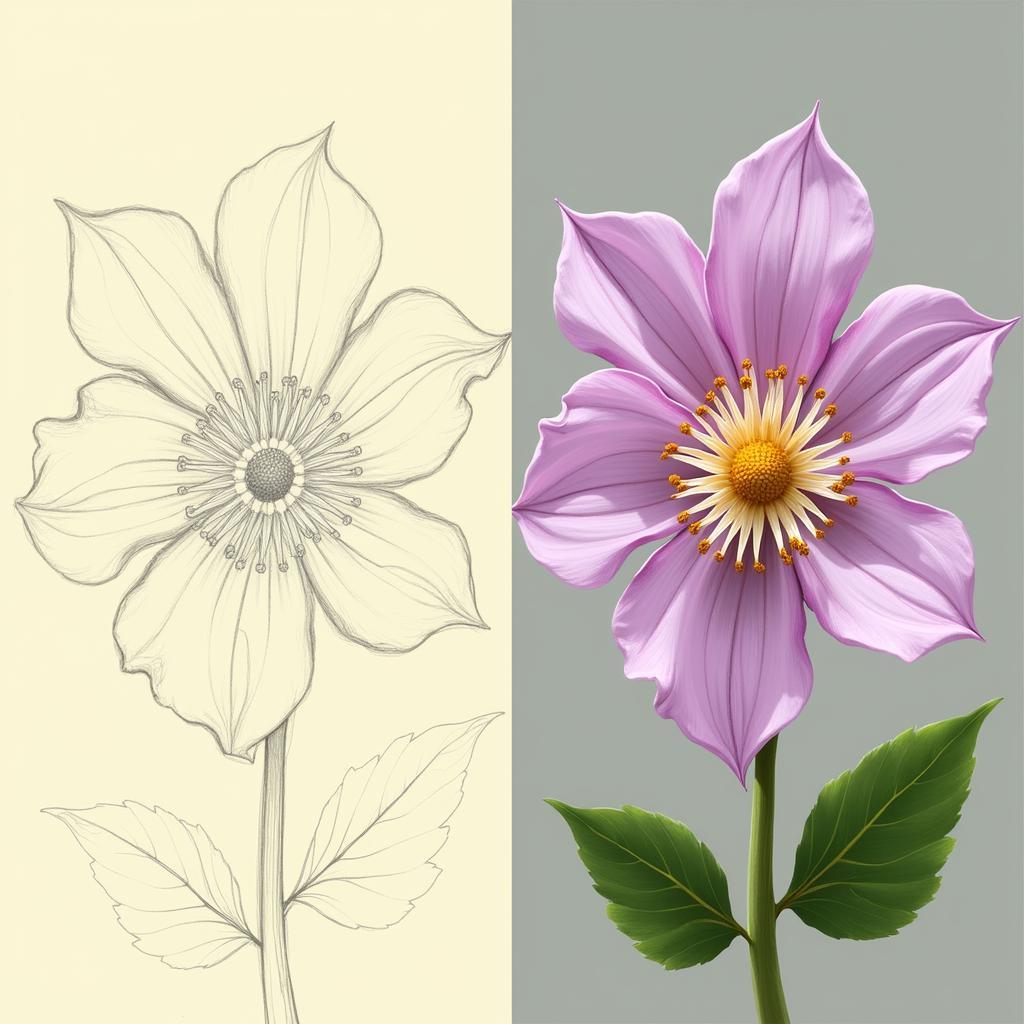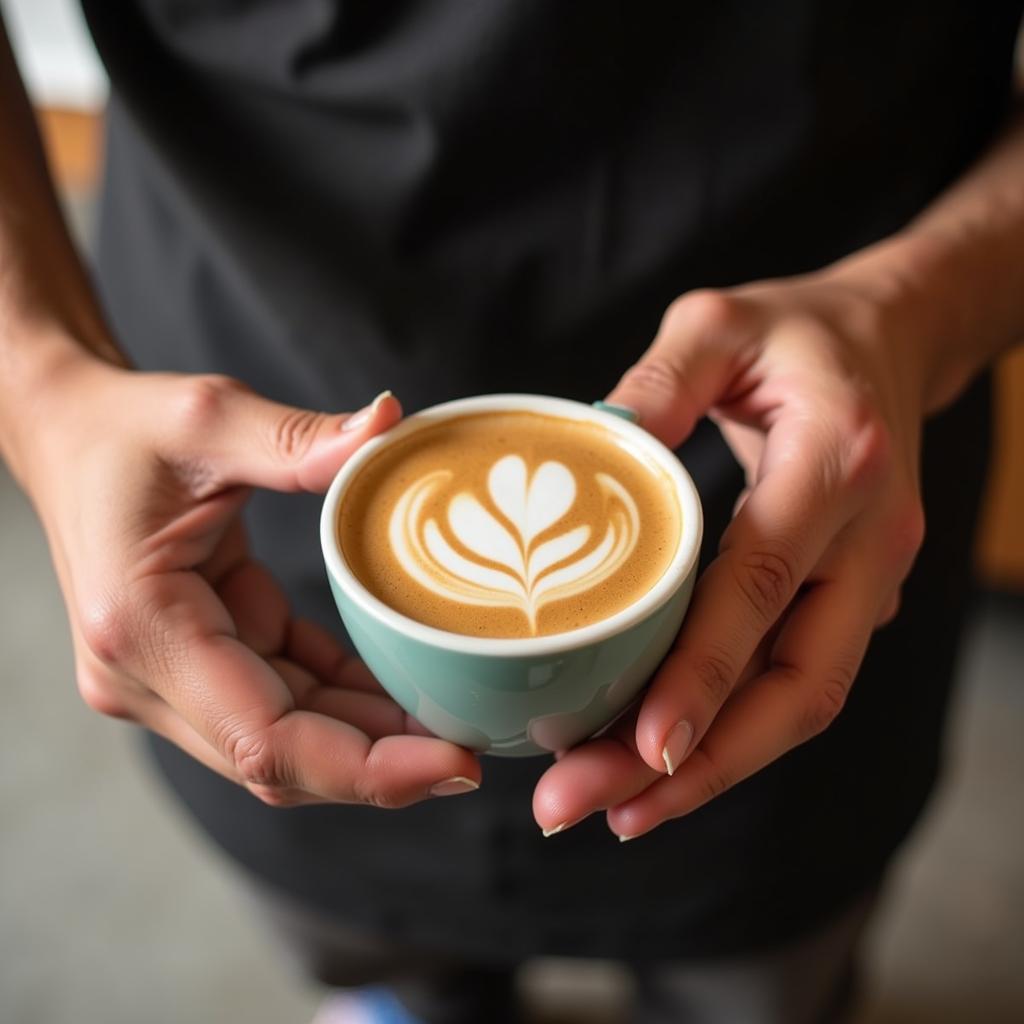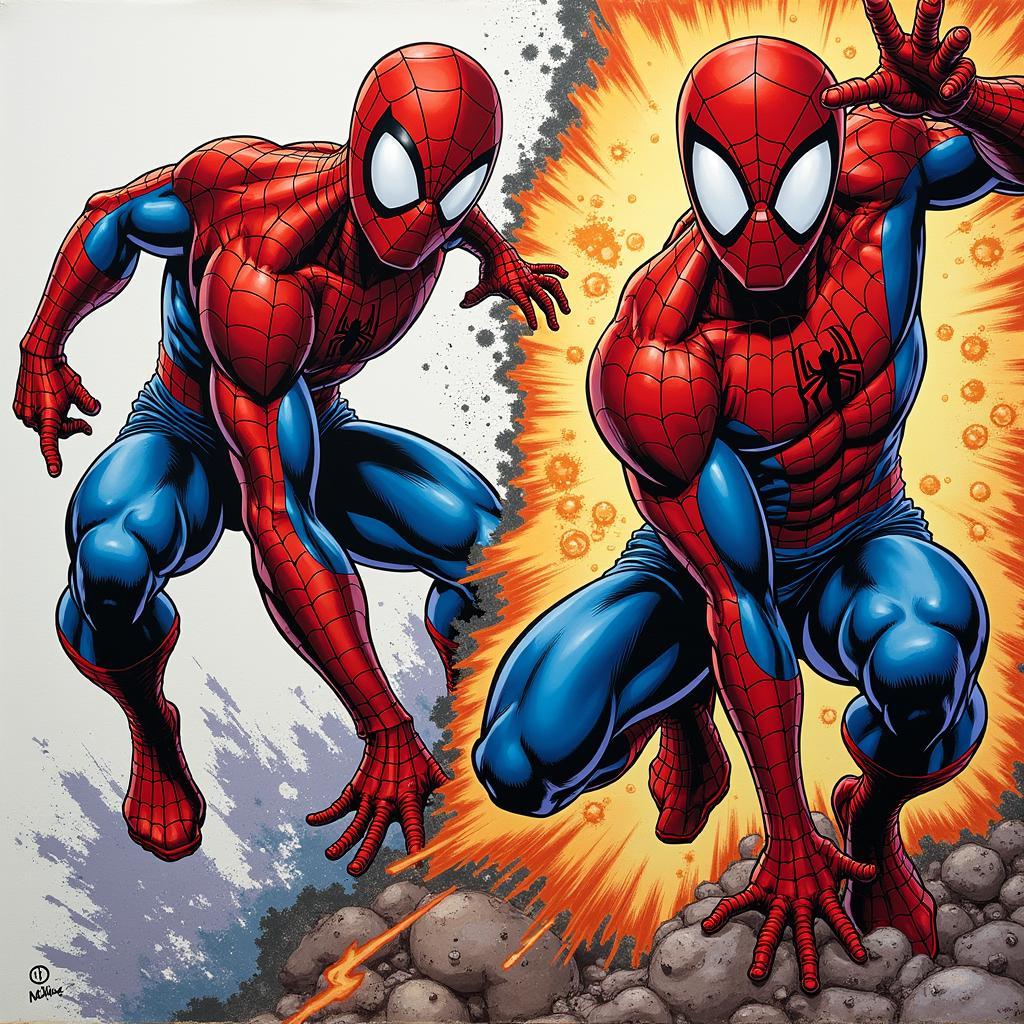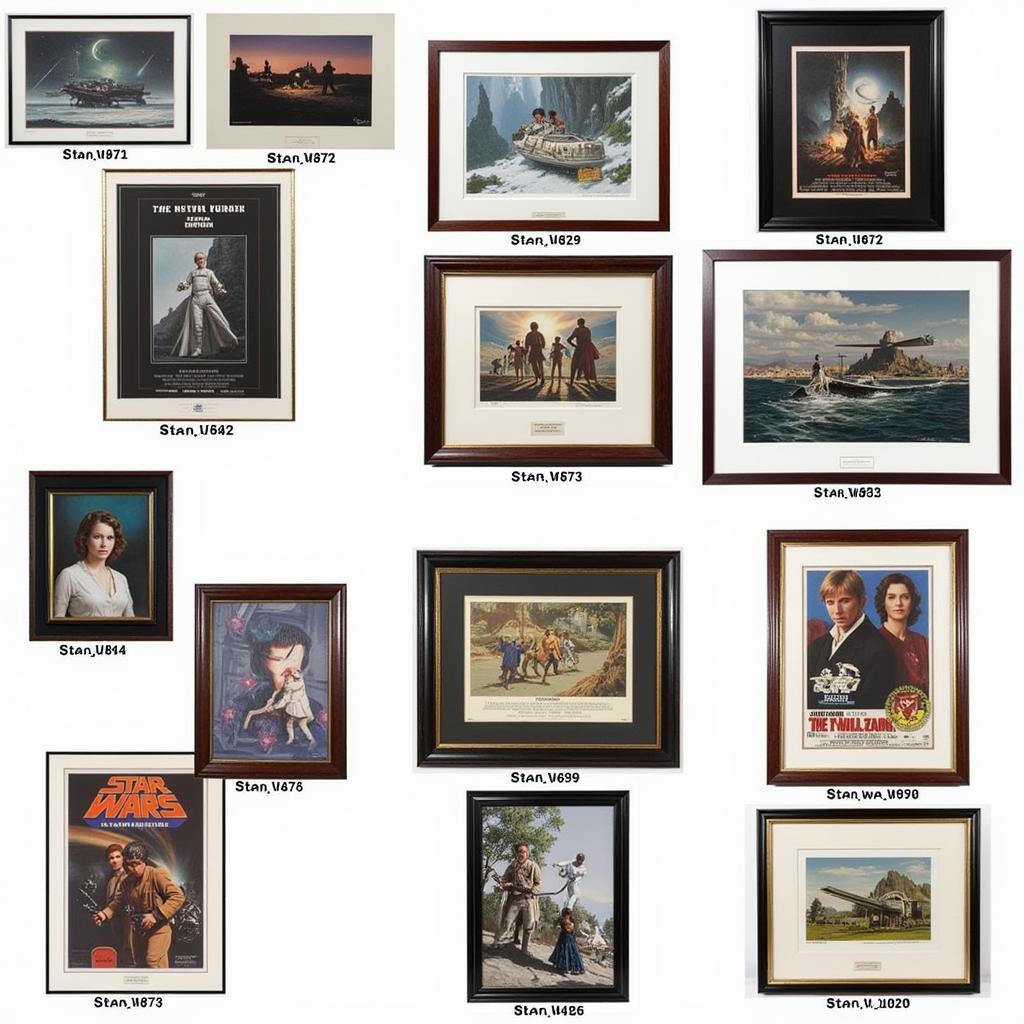Exploring the Vibrancy of Contemporary Colorful Art
Contemporary Colorful Art is a feast for the eyes. It’s a celebration of color in all its glory, used to evoke emotions, tell stories, and challenge traditional notions of aesthetics. From the bold and the bright to the subtle and nuanced, color becomes a powerful tool in the hands of contemporary artists.
This artistic movement goes beyond simply adding a splash of color. It delves into the psychology of color, exploring its impact on our perceptions and emotions. Artists use color not just decoratively but as an integral element of their artistic vocabulary.
The Allure of Color in Contemporary Art
So, what exactly makes contemporary colorful art so captivating? It’s the way it challenges the norm, pushing boundaries, and inviting us to see the world through a different lens. Let’s delve deeper into some of the key aspects that define this vibrant movement:
-
Emotional Impact: Color has a profound effect on our emotions. Artists harness this power to evoke a range of feelings, from joy and exuberance to contemplation and melancholy. A vibrant red can ignite passion, while a serene blue can soothe the soul.
-
Symbolic Language: Colors carry symbolic meanings that vary across cultures and contexts. Artists utilize these meanings to convey deeper messages and explore themes related to identity, society, and the human condition.
-
Experimentation and Innovation: Contemporary artists are constantly pushing the boundaries of color, experimenting with new techniques, materials, and technologies to create unique and innovative works.
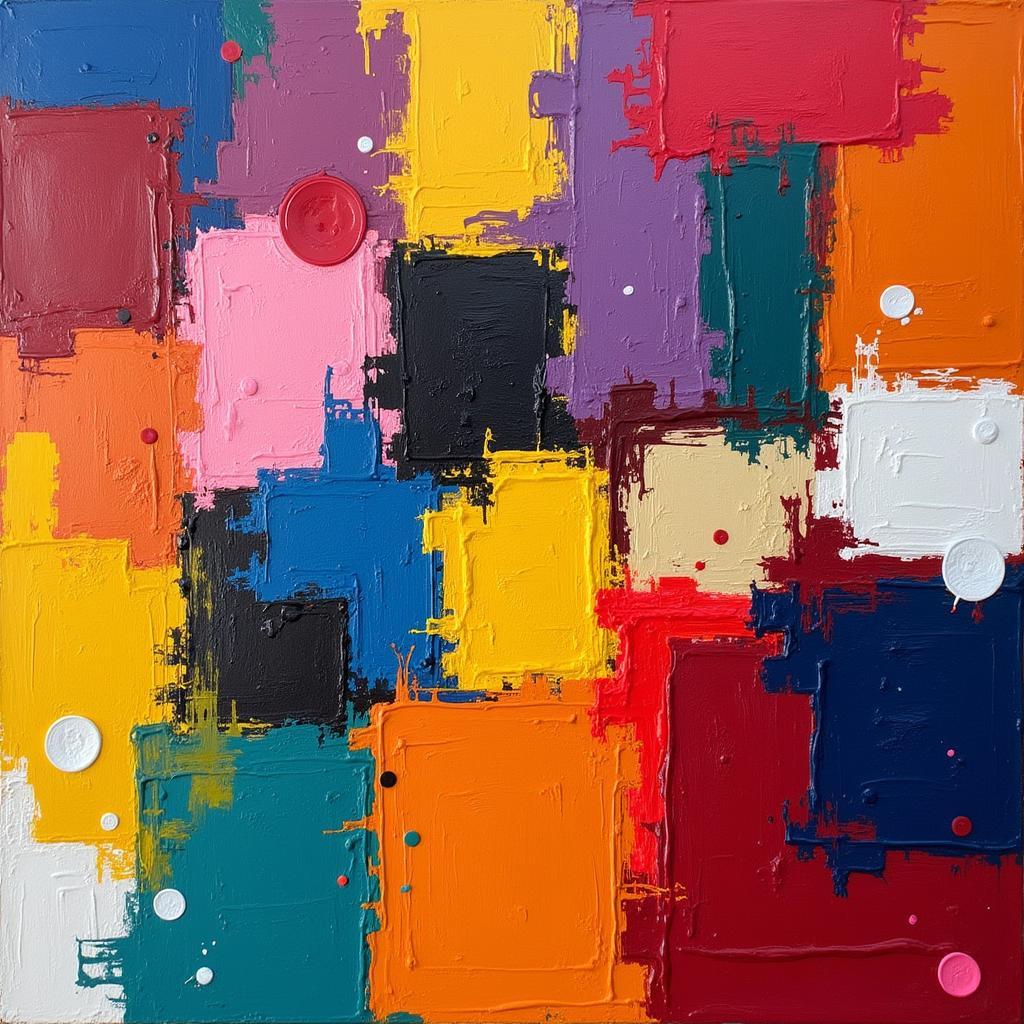 Contemporary Color Palette in Abstract Art
Contemporary Color Palette in Abstract Art
Key Movements Embracing Color
Throughout art history, various art movements have celebrated color as a central element. Let’s take a look at a few prominent movements that have shaped the landscape of contemporary colorful art:
1. Abstract Expressionism
This influential movement emerged in the mid-20th century, emphasizing spontaneous gestures and the expressive power of color. Artists like Mark Rothko and Helen Frankenthaler used large fields of color to evoke a sense of spirituality and the sublime.
2. Pop Art
Emerging in the 1950s and 1960s, Pop Art embraced popular culture and mass media, often using bold and vibrant colors to create eye-catching images. Artists like Andy Warhol and Roy Lichtenstein challenged traditional notions of art, blurring the lines between high art and popular culture.
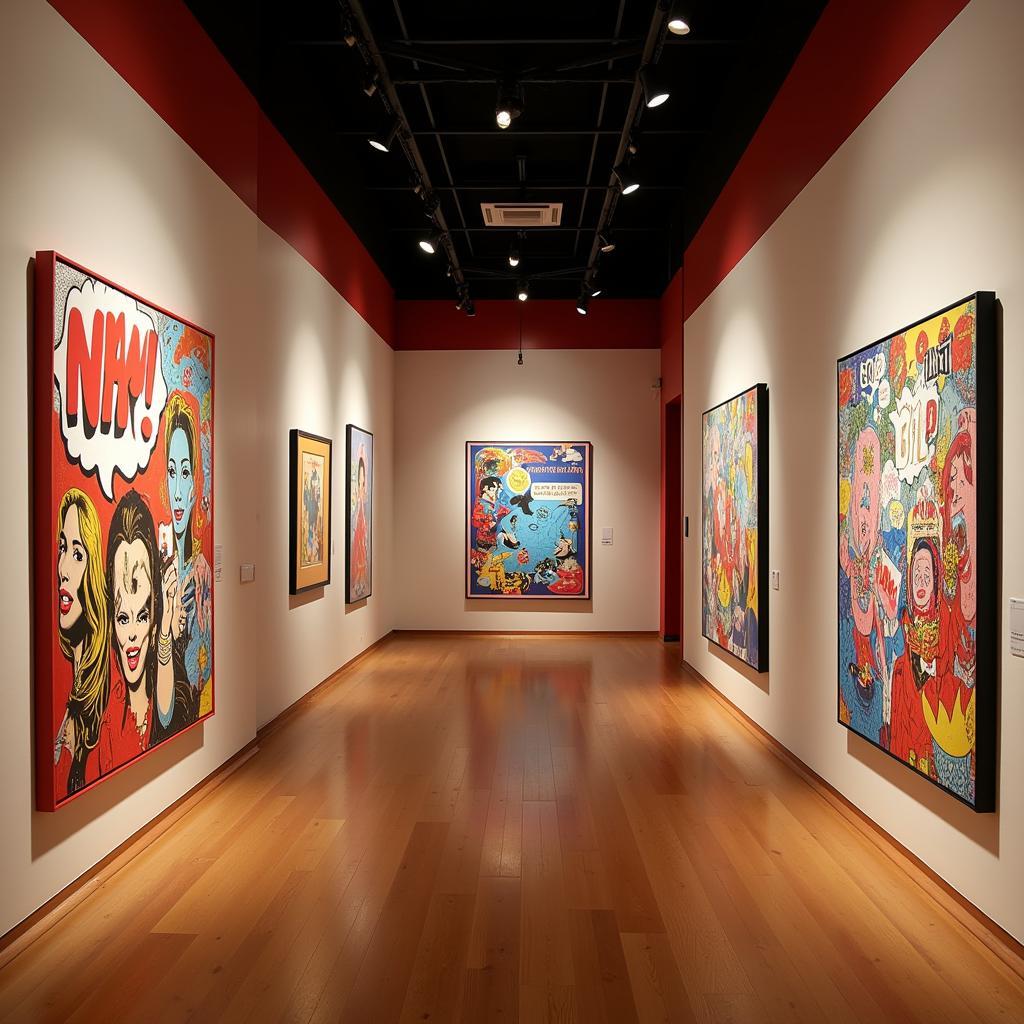 Pop Art Exhibition with Colorful Artwork
Pop Art Exhibition with Colorful Artwork
3. Street Art
Originating in the 1970s and 1980s, street art transformed public spaces into canvases for artistic expression. Artists like Banksy and Shepard Fairey often use bright colors and bold imagery to convey social and political messages, engaging with the urban environment and challenging societal norms.
Creating Your Own Colorful Masterpiece
Inspired by the vibrant world of contemporary colorful art? Here are a few tips to get you started on your own creative journey:
-
Explore Different Mediums: Don’t be afraid to experiment with various art materials, from acrylics and watercolors to digital art and mixed media. Each medium offers unique possibilities for exploring color.
-
Understand Color Theory: Familiarize yourself with the basics of color theory, such as the color wheel, complementary colors, and color harmony. This knowledge will empower you to make informed decisions about color choices.
-
Find Your Artistic Voice: Don’t be afraid to let your personality and emotions shine through your art. Experiment with different color palettes and techniques to discover your unique style.
Conclusion
Contemporary colorful art is a testament to the enduring power of color to move, inspire, and challenge. By embracing color in all its vibrancy, artists continue to push creative boundaries and invite us to experience the world in a new light. Whether you’re an art enthusiast or an aspiring artist, exploring the world of contemporary colorful art is sure to ignite your imagination and appreciation for the power of color.
Frequently Asked Questions
1. What are some key characteristics of contemporary colorful art?
Contemporary colorful art is characterized by its bold use of color, often going beyond traditional color palettes and exploring the emotional and symbolic aspects of color.
2. Who are some prominent contemporary artists known for their use of color?
Some notable artists include Jeff Koons, Takashi Murakami, and Yayoi Kusama, known for their vibrant and often large-scale works that embrace color as a central element.
3. Where can I find contemporary colorful art?
You can find contemporary colorful art in museums, galleries, art fairs, and online platforms dedicated to showcasing and selling art.
[colorful modern abstract art]
[drake wall art]
4. What are some tips for incorporating more color into my own art?
Experiment with different color palettes, try using complementary colors to create contrast, and don’t be afraid to use color boldly and expressively.
[persian wall art]
5. How can I learn more about contemporary colorful art?
Visit art museums and galleries, read art books and magazines, attend art lectures and workshops, and explore online resources dedicated to contemporary art.
[art deco floor rug]
[mexico metal art]
For any assistance, please contact us at Phone Number: 02462573573, Email: danteum@gmail.com Or visit us at: Savico Megamall, 7-9 Đ. Nguyễn Văn Linh, Gia Thụy, Long Biên, Hà Nội 10000, Việt Nam. We have a 24/7 customer support team.
